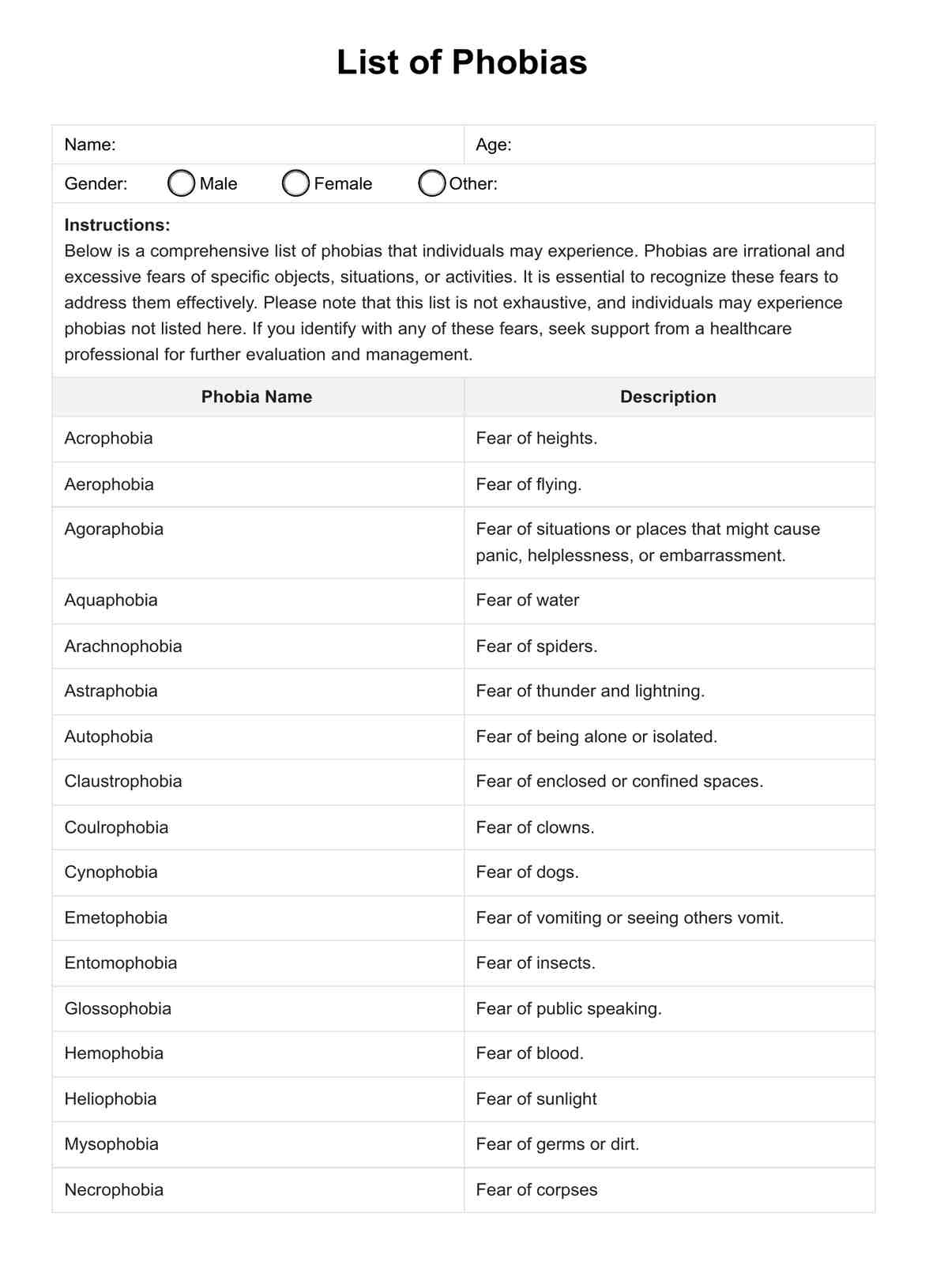Overcoming phobias can be challenging but achievable with the proper support and treatment. Always consult with a mental health professional.

List of Phobias
Explore a comprehensive List of Phobias, delving into irrational fears that affect individuals with detailed descriptions and insights into common anxieties.
Use Template
List of Phobias Template
Commonly asked questions
Symptoms of phobia may include intense fear, rapid heartbeat, sweating, trembling, and avoidance behaviors.
Phobias can develop from a combination of genetic, environmental, and psychological factors, such as traumatic experiences or learned behaviors.
EHR and practice management software
Get started for free
*No credit card required
Free
$0/usd
Unlimited clients
Telehealth
1GB of storage
Client portal text
Automated billing and online payments











